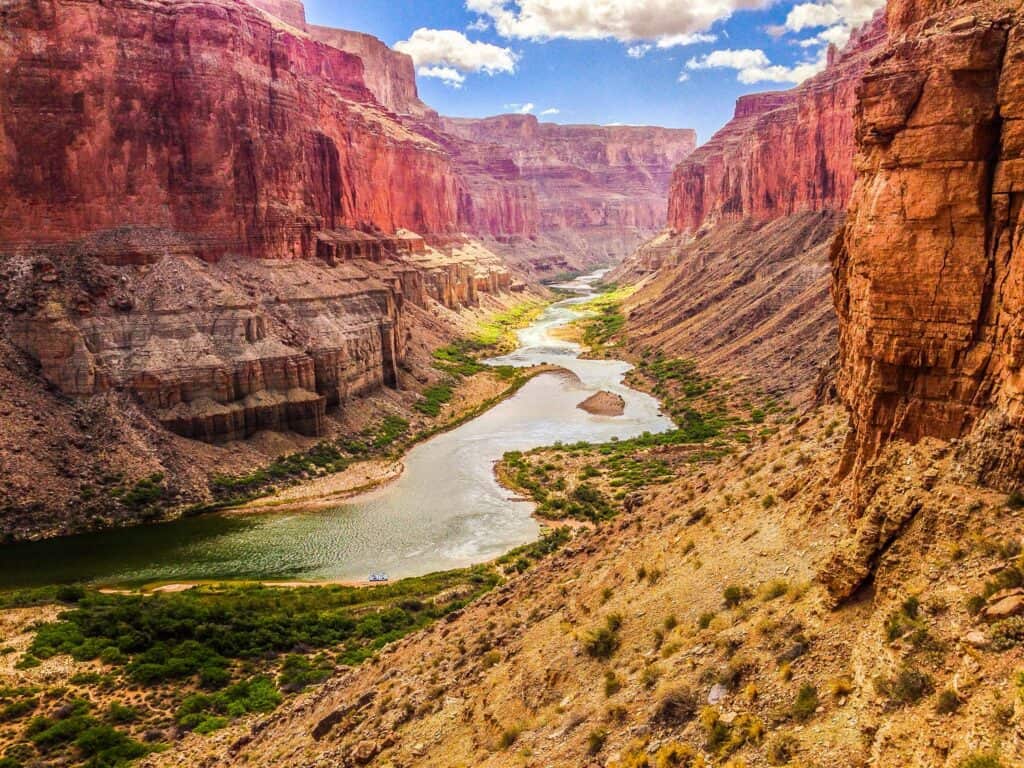
Last week, the Supreme Court rebuffed the Navajo Nation’s latest effort to hold the U.S. government to its treaty obligations. The tribe demanded that the United States identify the water rights it holds in trust for the tribe and stop misappropriating water that should be allocated to the Navajo. By excusing the federal government’s decades-long delay in clarifying and securing the tribe’s rights, the court leaves all those relying on Colorado River water uncertain about their own water rights precisely at a time when clarity is needed to address prolonged drought.
Past treaties and Supreme Court cases have affirmed that tribes are entitled to water rights that date back to the establishment of reservations. This makes them some of the West’s most senior water rights that should have priority during times of shortages. However, not all tribal water rights are clear or quantified. If a tribe decides to divert its water, it typically must begin negotiations with a state to quantify this amount, since the water will come from the state’s allocation. This process can be lengthy and contentious, depending on the total water proposed by the tribe for diversion. The Navajo, for example, have been negotiating with Arizona for decades, to no avail.
In 2021, the Navajo Nation filed suit against the federal government arguing that the United States has an affirmative obligation to secure the water rights held in trust for the tribe based on an 1868 peace treaty. This meant, according to the tribe, that the United States must at least acknowledge the amount of water the tribe is entitled to and not interfere with its efforts to access that water. In a 5-4 ruling, the court held that while the government holds the tribe’s water rights in trust, it is under no obligation to do anything to help the tribe identify how much and how to exercise those rights.
The ruling has several important consequences for water policy in the West. For one, by neglecting to clarify the Navajo’s water rights, it makes the rights of all water users in the Colorado River basin more uncertain. It is clear that the Navajo are entitled to some amount of water in Arizona that they do not have access to today. Because that water must eventually be provided—and in an amount that has yet to be determined—the rights of all basin users are uncertain; the water they use today and think they own may actually belong to the tribe.
Second, continued uncertainty may undermine cooperative efforts to address water scarcity in the region. Most of the solutions that have been proposed assume users know how much water they have access to annually and are thus able to contribute a portion of expected water to conservation. Any solution to water scarcity requires a clear understanding of who has access to water in the Colorado River. But while tribal rights remain murky, many users are unclear about how much water they have a legal right to. Without this knowledge, voluntary efforts to conserve water will be undermined as individuals cannot predict when or how much water they will have in a given year. Or, worse, it could lead to voluntary reductions on paper only if water counted as conserved today is later determined to have belonged to the tribe and to remain available for the tribe to use or lease.
Together, these factors will make it more difficult to address today’s shortages in the Colorado River Basin. The Bureau of Reclamation has requested a 2 to 4-million acre-foot reduction in water use from all states that use the Colorado River. States could consider using methods like rotational fallowing and water leasing to meet these reductions while compensating existing water rights holders. But all of these mechanisms assume that rights holders know how much water they have access to and when. If water rights are not clearly defined, these solutions will be less feasible.
This ambiguity in water rights is unfortunate as tribes have often played a crucial role in providing voluntary water reductions to meet conservation goals. Tribes like the Gila River Indian Community and Colorado River Indian Tribes that have settled and established their rights have leased water to states and helped raise the level of Lake Mead. While it is not guaranteed that the Navajo would contribute to Arizona’s reduction, passing on an opportunity to quantify rights and provide certainty to all users regarding existing water allocation creates insecurity for both tribes and other Lower Basin users.
The consequences of last week’s ruling reach far beyond the Navajo Nation, but these costs are not borne equally. In the short run, basin users will benefit from unused tribal water. But for the Navajo Nation, a lack of certainty in water rights inhibits their ability to build infrastructure, cultivate their land, improve water sanitation, and capture revenue from their resource. The very real human cost is borne solely by the Navajo and will continue until they are able to access and establish their rights.



